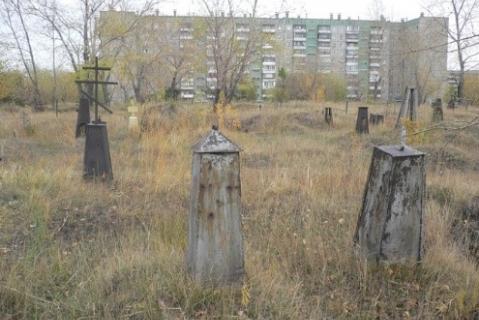According to official sources, the northeast cemetery in the city’s Tractor Factory district was opened at the end of 1941. Between then and 1944 many who built the Chelyabinsk Tractor Factory were buried there: Bakallag prisoners, forced labourers, those who died in the evacuation hospital, German, Rumanian and Hungarian POWs. The numbers of forced labourers buried there has not been established, a few of their names are known. The last burial dates to 1962 after which the cemetery was not used. It fell into disrepair and by the early 2000s few grave markers had survived.
In 2001 a chapel dedicated to the Beheading of John the Baptist was built in the centre of the cemetery and part of its territory was cleared and tidied. In 2010 the city administration decided to move the cemetery and create a green area in its place. In 2010-2011 remains were transferred en masse to the Pokrovskoe cemetery. In spring 2011 a park was laid out in the old cemetery: paths were created, and more than a hundred trees were planted.
The electronic Book of Remembrance of Soviet Germans (Gedenkbuch) contains biographical entries on more than 100,000 Soviet Germans variously sentenced under Article 58, deported as forced settlers, or mobilised in camps of forced labourers.
The Memorial online database (2025) includes 32,342 victims in the Chelyabinsk Region (BR 22,836).
Over a half were local residents (18,625). Almost 12,000 were held in the camps; over 800 were deported from the Region. Police records add and name 9,429 German women and men transferred from elsewhere to special settlements in the Chelyabinsk Region.
| Date | Nature of ceremonies | Organiser or responsible person | Participants | Frequency |
|---|---|---|---|---|
|
nk
|
Commemorative Services
|
nk
|
nk
|
From time to time
|
| State of burials | Area | Boundaries |
|---|---|---|
|
grave-markers have survived in part
|
15 hectares
|
not delineated
|
[ Original texts & hyperlinks ]
M.S. Salmina, “The history of wartime and post-war burials at the Chelyabinsk Tractor Factory cemetery”, Historical Readings, Vol. 9 ,The Unknown War: Little-studied pages of the Great Patriotic War, Chelyabinsk, 2005

